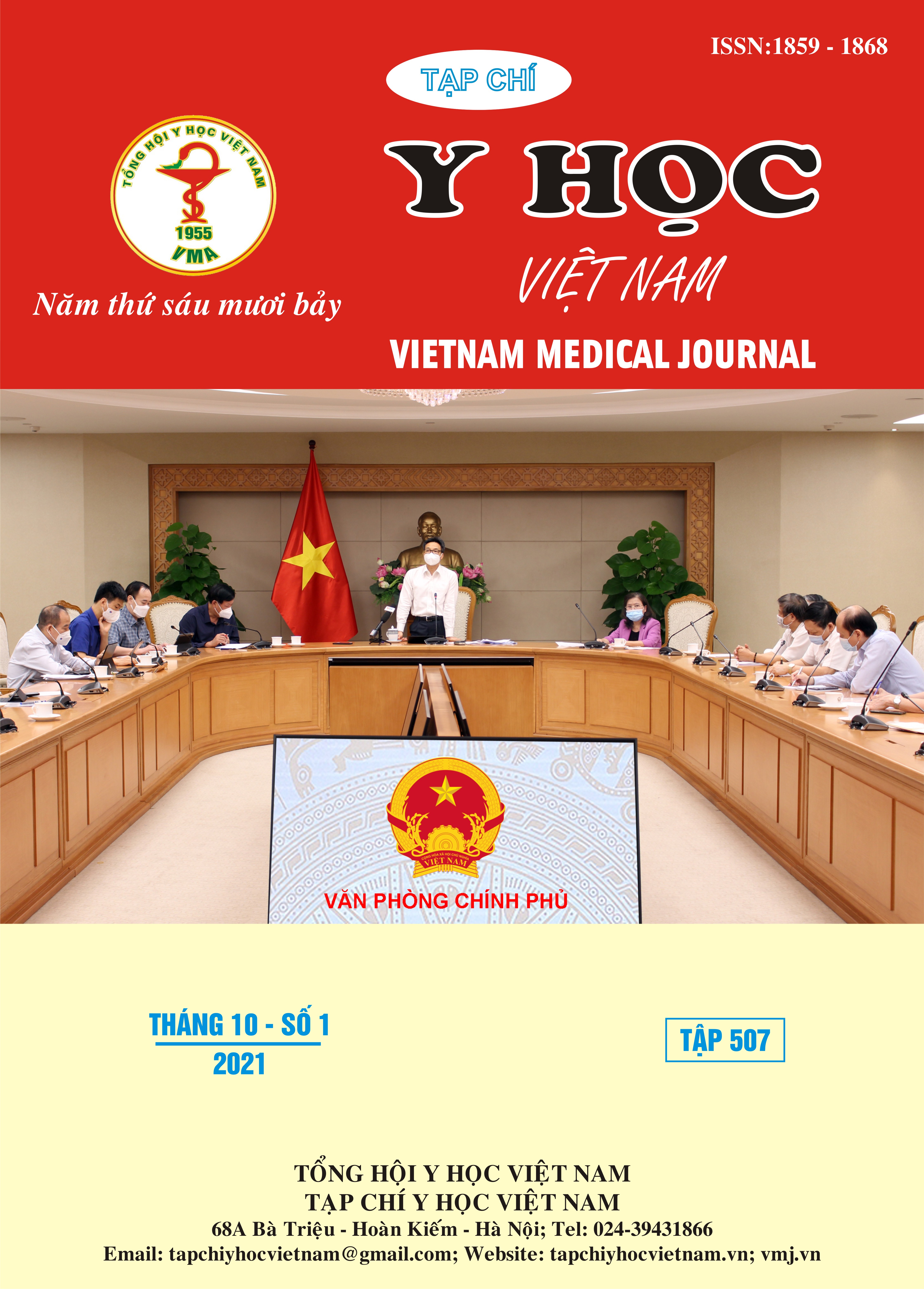THE OUTCOMES OF MANAGEMENT OF ACUTE LEAD POISONING IN CHILDREN USING TRADITIONAL MEDICINE
Main Article Content
Abstract
Objectives: To investigate the clinical, sub-clinical features and the outcomes of management of acute lead poisoning in children using traditional medicine. Subjects and method: A descriptive cross sectional study to assess 89 patients in the NHP from June 2012 to June 2021. Results: 60,7% of the participants are under 12 months old. 47,2% patients used traditional medicine for the treatment of fungi infection in the mouth. Common clinical features include mental status change (40,4%), seizures (48,3%), skin pallor (82%), vomiting (61,8%) and diarrhea (29,2%). Sub-clinical features include: 80% of participants had increased mineral density of epiphysis, enlarge of ventricle (9,4%); 19,4% with epileptic waves in electroencephalogram. CSF changes in which protein elevates (1,64 ± 1,36 g/l) and cells were normal or mild increased (9,8 ± 24,89). The mean blood lead levels on admission is 108,39 ± 55,8 µg/dl. After 30 day of treatment, the blood lead levels decreased dramatically to 49,7% and to 71,3% after 1 year of treatment. Urine lead levels increased in day 5 and day 30 with the peak of 5,644 mg/l. The mortality rate was of 6,7% (6/89 patients). Conclusion: Clinical presentation of children with lead poisoning included seizures and mental alternatives and anaemic. In the cerebrospinal fluid, proteins elevated but cells were unchanged. The blood lead levels decrease dramatically and urine lead levels gradually increased during treatment. The mortality rate was of 6,7%
Article Details
Keywords
lead poisoning, traditional medicine
References
2. Bộ Y Tế (2012), “Hướng dẫn chẩn đoán và điều trị ngộ độc chì”. (Ban hành kèm theo Quyết định số 1548/QĐ-BYT ngày 10 tháng 5 năm 2012 của Bộ trưởng Bộ Y tế). chủ biên.
3. Centers for Disease Control and Prevention (CDC) (2005), “Blood lead levels-United States, 1999-2002”, MMWR Morb Mortal Wkly Rep, 54:513.
4. Ngô Tiến Đông, Phạm Thị Vân Anh, Phạm Văn Thắng (2012), “Ngộ độc chì ở trẻ em liên quan đến sử dụng thuốc nam: một số đặc điểm dịch tễ, lâm sàng, cận lâm sàng và nhận xét kết quả điều trị”, Tạp chí y học.
5. Nguyễn Anh Tuấn, Phạm Duệ, Bế Hồng Thu và cộng sự (2013), “Nhận xét hiệu quả bước đầu điều trị Ngộ độc chì ở trẻ em bằng EDTA tại trung tâm chống độc bệnh viện Bạch Mai 2012-2013”,Kỷ yếu hội nghị chống độc quốc tế Hà Nội 2013:113- 25.
6. Ngô Việt Hưng (2013), “Nghiên cứu đặc điểm lâm sàng, cận lâm sàng ngộ độc chì ở trẻ em điều trị tại Trung tâm chống độc Bạch Mai”, Luận văn thạc sỹ, Đại học Y Hà Nội.


